How to transplant Kalanchoe?
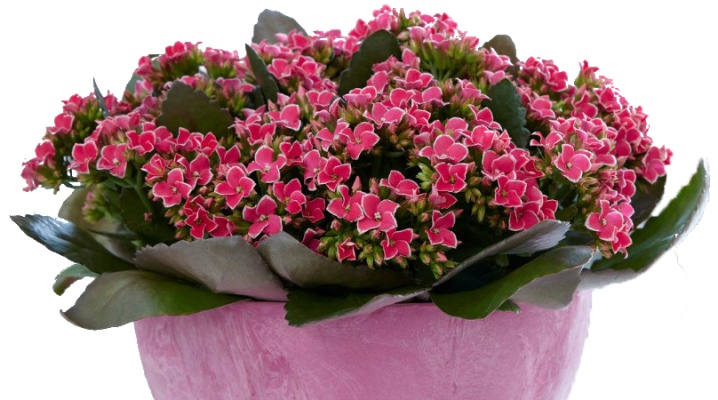
Kalanchoe is one of the most popular houseplants. Florists loved it for its attractive appearance and medicinal properties. In order for a flower to grow and develop well, it is necessary to organize proper care for it. Particular attention should be paid to transplanting the plant, which it periodically needs. This article will tell you how to transplant the Kalanchoe correctly.
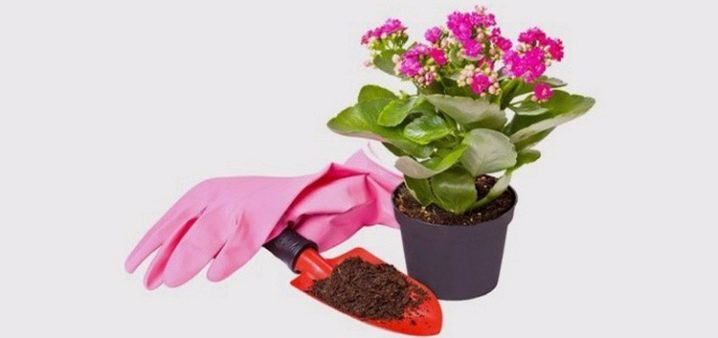
Why transplant?
Kalanchoe is considered an easy-to-care indoor plant. However, when growing a flower, you still need to follow certain rules. One of them is to periodically transplant the plant into a new pot. The need for this procedure is primarily due to the fact that the Kalanchoe is characterized by active growth.
If the flower is not transplanted in time, the root system may begin to rot.
A planned transplant is recommended at least once every 12 months. In an adult plant, the growth rate slows down, so it should be replanted every 2 years.
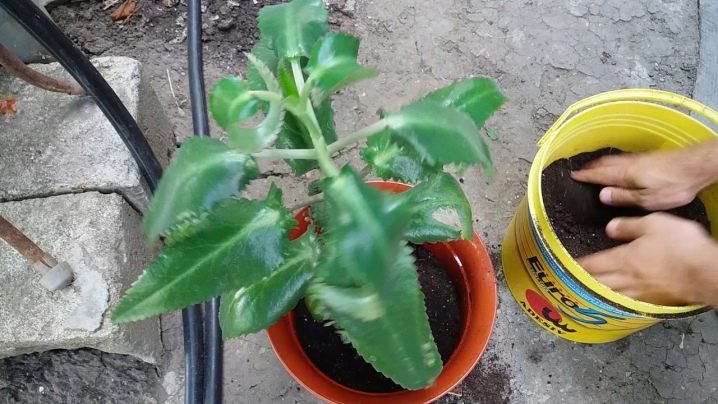
In addition to the natural growth of Kalanchoe, there are a number of cases in which a transplant is also necessary. These include the following situations:
- a year has not yet passed since the previous transplant, but the roots of the flower have made their way through the drainage and are visible in the holes at the bottom of the pot;
- the soil has become too hard and does not absorb moisture well;
- the plant has just been purchased (in this case, the transplant is necessary due to the fact that the land that was in the pot when the flower was purchased is not suitable for growing it at home).
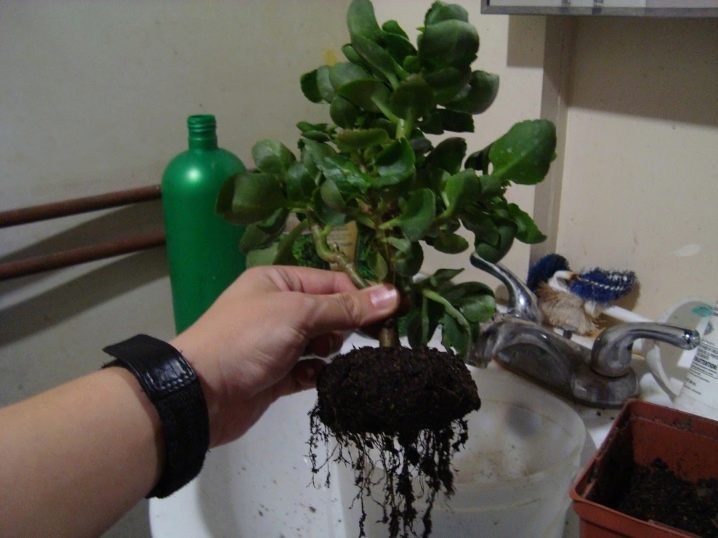
The right time
The transplant procedure is recommended to be carried out in late spring, immediately after the flowering phase ends. If we are talking about a newly purchased plant, then you need to wait one week. This is necessary so that the flower can adapt to home conditions.
The most unfavorable time for transplanting is the flowering period. At this time, the plant is most sensitive to any external influences. After transplantation, during the flowering period of the Kalanchoe, special and long-term care will be required. Therefore, it is best to wait until all flowers have completely fallen off.

Pot selection
Before proceeding with the Kalanchoe transplant, you must choose a suitable container. The choice of another pot primarily depends on the age of the plant. For transplanting young flowers, containers with a diameter of 12 to 18 centimeters are suitable. The new pot should be 2 centimeters wider than the previous one.
Transplanting into too wide a container can lead to the fact that the Kalanchoe will grow strongly.
This can hinder the development and flowering of the plant. This is especially true for adult specimens. For such a flower, it is better to use a pot in which the previous container can be placed close. As for the material, it is better to give preference to unglazed ceramics or clay.
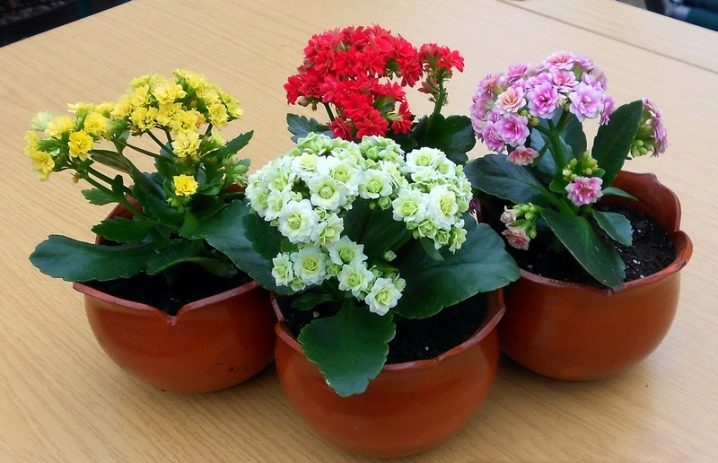
There are a few basic things to consider when choosing a pot in a store.
- The appearance of the container. There should be no defects in the form of chips, cracks or scratches on the surface of the pot.
- It is better if the pot comes with a deep and wide pan that will hold back water in case of abundant watering.
- The edges of the container must not be sharp. Otherwise, you can damage the plant during transplantation.
- There should be drainage holes at the bottom of the pot.
It is important not only to choose the right container, but also to prepare it for plant transplantation. The pot must be dipped in hot water, then treated with potassium permanganate solution or thoroughly washed with laundry soap. By the time the Kalanchoe is transplanted, the container must be completely dry.

What kind of soil is needed?
For transplanting a plant, you can purchase ready-made soil or make it yourself. Any store land for succulents is suitable for Kalanchoe. When making the composition of the house, it is worth remembering that the acidity of the soil should be in the range from 5 to 6.5. You can prepare the substrate from the following components:
- 1 part sand;
- 1 part peat;
- 4 parts of sod land;
- 2 parts of leaf humus;
- 2 large spoons of charcoal.
You can also mix 2 parts garden soil, 4 parts peat soil and 1 part sand. In the resulting composition, it is recommended to introduce 1 part of the broken brick of a fine fraction, so that the substrate is looser.
If home-made, and not purchased, soil is used, then it is recommended to place it in an oven preheated to a temperature of 180 degrees for 20 minutes. Warming up the soil is necessary in order to kill all the parasites that may be in it.
In addition to the earth, drainage must be placed in the pot. The layer thickness must be at least 20 millimeters. Expanded clay or crushed brick can be used as drainage.
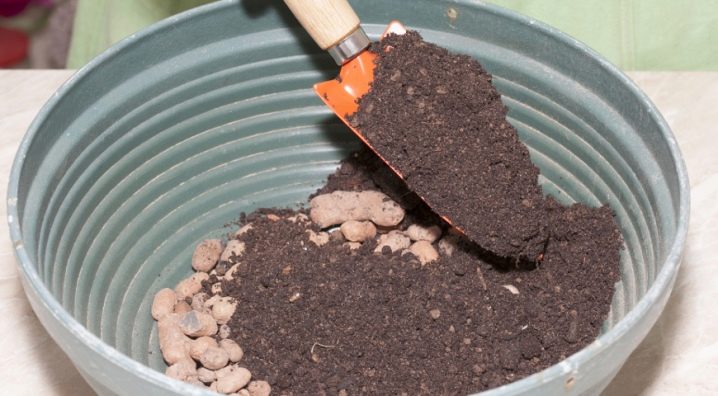
How to transplant?
It is important to approach the process of transplanting Kalanchoe with all responsibility. Otherwise, you can harm the plant. Let's consider step by step the process of transplanting a flower in different cases.
Planned transplant
Moving the Kalanchoe to a new pot is not difficult. After purchasing a suitable pot and soil, as well as preliminary preparation you need to perform several sequential actions.
- A drainage layer is laid out at the bottom of the container, which is then sprinkled with a small amount of earth.
- The soil in the old pot is well moistened in order to make it easier to remove the Kalanchoe.
- A flower is carefully removed from an old container. The root system is carefully cleaned from the earth. The roots are inspected for damage and rot, which must be removed if present. If an adult plant is transplanted, then the root system is not cleared from the earth.
- The Kalanchoe is placed in a new container and the roots are gently straightened, after which they are lightly covered with earth.
- The flower is held in the center, the substrate is reported into the pot, not reaching the edge exactly 2 centimeters. Next to the flower, the soil is crushed.
- Finally, it is necessary to slightly moisten the soil.
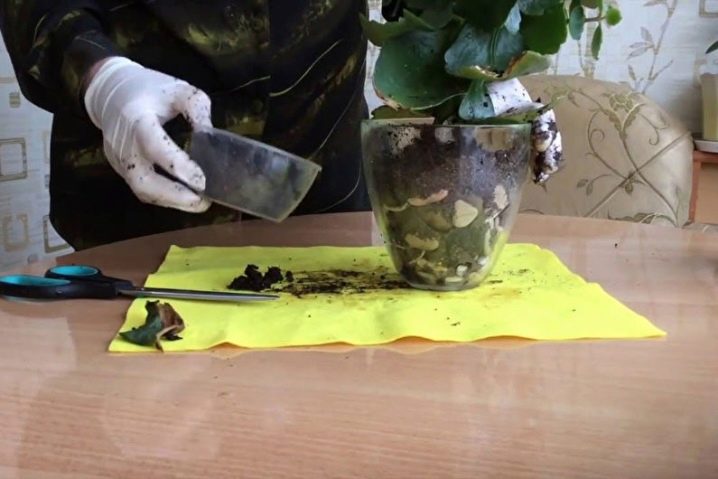
After the purchase
The process of transplanting a Kalanchoe after purchase is similar to the planned movement of a plant. However, in this case, the procedure will have some nuances.
- After the drainage layer has been placed in the pot, it is necessary to fill it with soil by 2/3 of the total volume of the container.
- After the flower is removed from the old pot, its root system is checked for defects. Old, damaged or rotten roots are removed, and the cut sites are treated with activated carbon, which must first be crushed into small crumbs.
- The flower is placed in a new pot and, straightening the root system, another 3 centimeters of earth is poured. The soil must be moistened and sprinkled on top with a dry substrate.
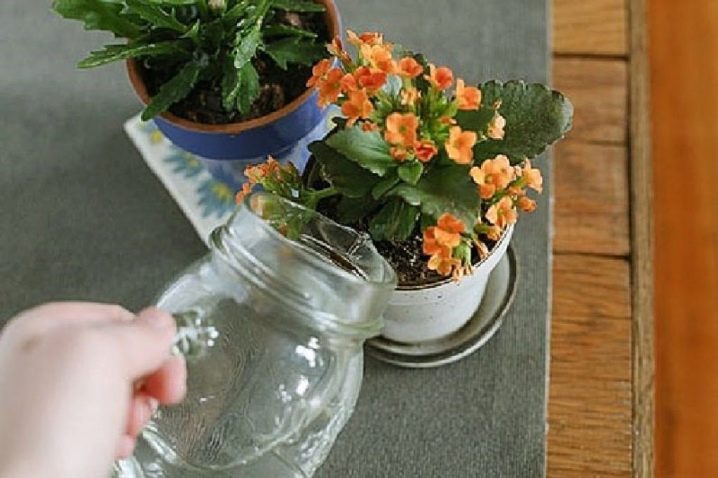
Further care
For the favorable development of Kalanchoe, it is necessary to follow some rules of maintenance and care at home. Optimal growing conditions before and after transplanting remain unchanged.
The air temperature in summer should be 23-25 degrees Celsius, and in winter - at least 12 degrees.
Kalanchoe is a light-loving plant and needs good lighting. However, exposure of the flower to direct sunlight should be avoided. The flower should be illuminated for 12 hours a day.
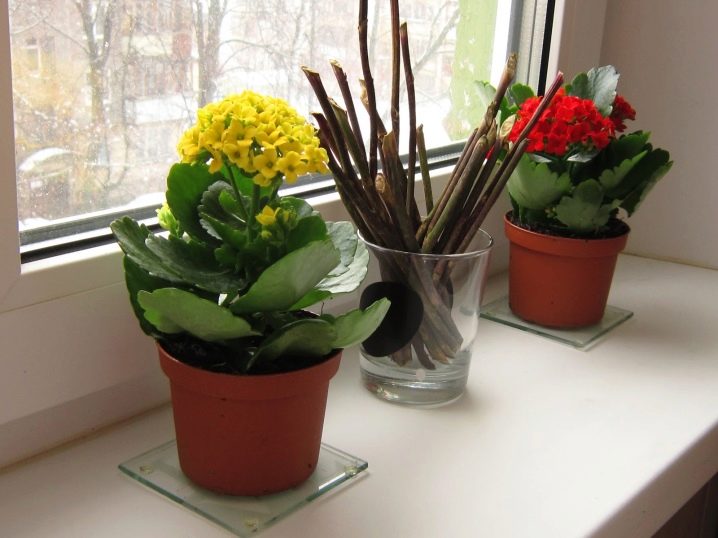
The plant needs regular watering, while the amount of water should be moderate.Water the flower once a week or as the soil dries. After transplanting, it is not recommended to moisturize the Kalanchoe for the first 4 days, so that the plant better adapts to new conditions.
In a dry and hot summer, the Kalanchoe, in addition to watering, needs additional moisture. The leaves of the plant should be periodically sprayed with a spray bottle and wiped immediately with a soft cloth. The exception is varieties with drooping leaves.

In winter, the frequency of watering should be changed to 1 time every 14 days. It is necessary to pour water at the very root, since in the case of excessive moisture in the leaves, the process of decay may begin. It is recommended to infuse water for some time at room temperature before watering.
As for fertilizers, after transplanting, you should also wait some time until the plant is fully acclimatized and restored. In the future, Kalanchoe needs to be fed no more than once a month. Mineral or organic compounds can be used as fertilizers. You can also use ready-made complex mixtures for succulents.
Kalanchoe needs regular cutting of the stems. It is necessary to carry out pruning in the spring, when the shoots are pulled up. You also need to cut off any remaining flower stalks after the plant blooms.
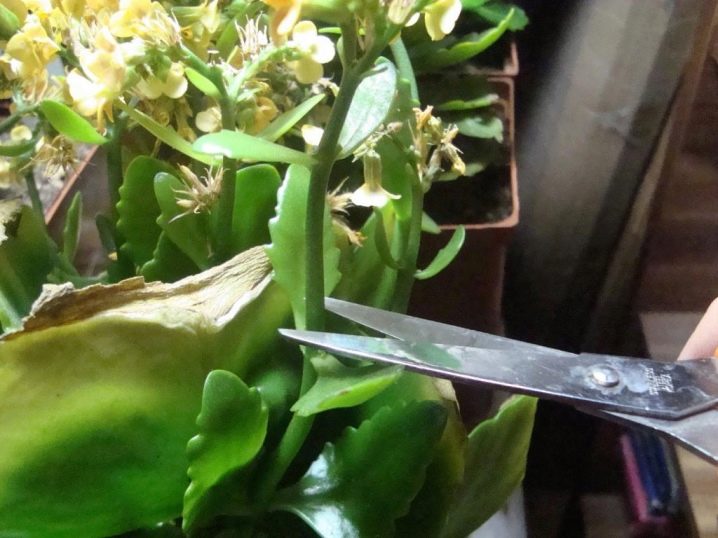
Frequent mistakes
When transplanting Kalanchoe, you can make some mistakes that will complicate the further care of the plant. In this case, it is important to correct them in time so as not to harm the flower. One of the common mistakes is using an oversized pot. As a result of the wrong choice of capacity, the Kalanchoe will grow strongly in different directions and stop blooming. To solve this problem, you can plant several Kalanchoe shoots in the pot. However, with further transplanting, it is recommended to distribute the flowers in different pots.
The lack of flowering may indicate improper care after transplantation. First of all, this may be due to excessive feeding of the Kalanchoe, so the amount of fertilizer will need to be reduced.
Sometimes growers make mistakes in the choice of soil and acquire a universal substrate instead of a special composition for succulents. In such soil, the flower may die, so it is recommended to move it to a suitable soil.
Often during transplantation, the root system of the Kalanchoe is damaged. You can understand this by the appearance of the flower - the leaves begin to fade and turn yellow. In this case, it is necessary to follow all the rules for caring for the plant and give the roots some time to adapt and grow.
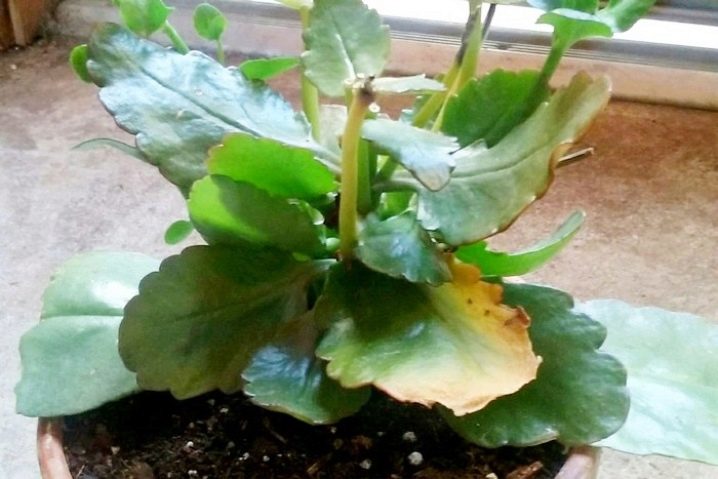
For information on how and when to transplant Kalanchoe, see the next video.





















































The comment was sent successfully.